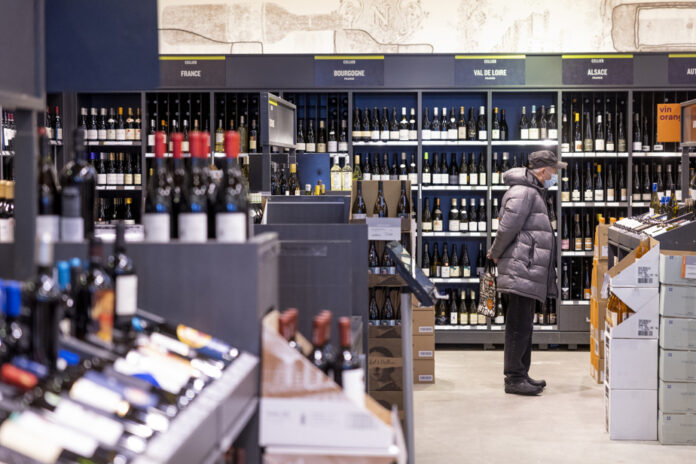Wine bottled in Quebec, wine of Quebec origin and wine prepared in Quebec. Which of these three products is 100% local? These different identifiers used by the SAQ to classify bottles are confusing consumers, denounces the Conseil des vins du Québec (CVQ).
In the process, he accuses certain companies whose wine products are not entirely produced here of wrongly playing the local purchase card. Its president, Louis Denault, goes so far as to speak of “fraud”.
“Those who use the label “Vin du Québec” by the band, it’s a bit of fraud”, he launched bluntly, during the general assembly of the association, Thursday in Drummondville.
Go back. A few months ago, wines from the Pas Sages range, made with Canadian vines, but bottled in Rougemont and whose labels were created by local artists, found their way to the SAQ on the shelves of the reserved for Québec wines, the one identified with the Origine Québec pictogram.
“We’ve stepped up to the plate again. We freaked out, ”said Mr. Denault in an interview, adding in the process that he had repeatedly informed the Crown corporation of his dissatisfaction with the presence of these different identifiers, all decked out with a flower. of lilies.
Wines marketed by Stefano Faita, known for his television shows, sauces and restaurants, may raise the same questions about their origin. These are produced in Italy.
Between 2017 and 2022, the number of bottles of Quebec wines sold (SAQ, grocery stores, vineyards, restaurants) increased by 65%.
“The more popular we are, the more certain companies will want to stick to the brand,” said Mr. Denault. But this one is categorical: “A wine from Quebec is a wine whose grapes were grown in Quebec. There is nothing more than that. »
Eventually, the president of the CVQ would like only wines authenticated Vin du Québec with a protected geographical indication (PGI) to be entitled to an identifier. “Drop me everything else.” »
At the SAQ, Josée Dumas, director of supply management and marketing, claims to have reacted quickly when she noticed that the Pas Sages wines had ended up in the wrong section. “We acted quickly. Branches have been notified,” she said. Ms. Dumas was also present at the general meeting of winegrowers.
“We also have to do education with our branch employees,” she admitted. It’s easy to get it wrong, to get mixed up. They need to be educated about Quebec wine and how to [place] the products to avoid frustrations for people who develop a product from grape to bottle. »
The event gave Mr. Denault an additional argument. “They were told: you see, even your employees find this annoying. Imagine the consumer in all of this. »
On the side of Vins Arterra Canada, the company – whose head office is in Mississauga, Ontario – which notably markets Pas Sages wines as well as Jessica Harnois’s Bù wines, it is admitted that the different “identifiers are similar”.
As for the popular sommelier’s Bù wines, Ms. Meplon believes that the origin of these – France, Italy, Canada and Spain – is prominently displayed on the bottle. So there is no confusion.
On the other hand, by emphasizing its bottling made in Quebec, does the Pas Sages wine line, with its labels designed by local artists, play on the local fiber? Certainly, on the company’s website, they are described as follows: “From grape varieties that thrive on Canadian soil and bottled in Rougemont, Quebec, the Pas Sages line of wines expresses its Quebec character in and on each bottle. »
To this, Ms. Meplon replies that the idea is rather to emphasize the fact that Arterra “supports the local economy” by employing 72 people at its plant in Montérégie.
Pas Sages wines are not Quebec wines, however, according to her. His definition: “It’s a wine from here.” It is Canadian wine bottled in Quebec. »
How to find it?















